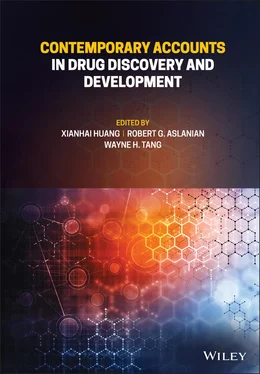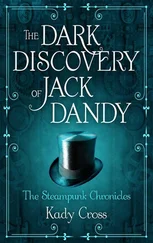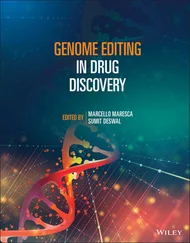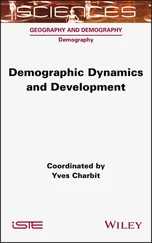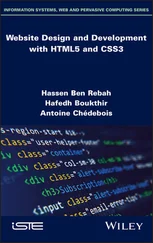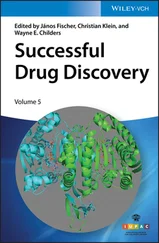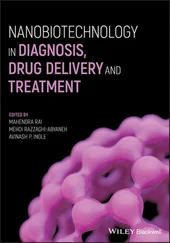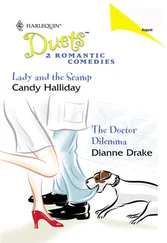Contemporary Accounts in Drug Discovery and Development
Здесь есть возможность читать онлайн «Contemporary Accounts in Drug Discovery and Development» — ознакомительный отрывок электронной книги совершенно бесплатно, а после прочтения отрывка купить полную версию. В некоторых случаях можно слушать аудио, скачать через торрент в формате fb2 и присутствует краткое содержание. Жанр: unrecognised, на английском языке. Описание произведения, (предисловие) а так же отзывы посетителей доступны на портале библиотеки ЛибКат.
- Название:Contemporary Accounts in Drug Discovery and Development
- Автор:
- Жанр:
- Год:неизвестен
- ISBN:нет данных
- Рейтинг книги:4 / 5. Голосов: 1
-
Избранное:Добавить в избранное
- Отзывы:
-
Ваша оценка:
- 80
- 1
- 2
- 3
- 4
- 5
Contemporary Accounts in Drug Discovery and Development: краткое содержание, описание и аннотация
Предлагаем к чтению аннотацию, описание, краткое содержание или предисловие (зависит от того, что написал сам автор книги «Contemporary Accounts in Drug Discovery and Development»). Если вы не нашли необходимую информацию о книге — напишите в комментариях, мы постараемся отыскать её.
A useful guide for medicinal chemists and pharmaceutical scientists Contemporary Accounts in Drug Discovery and Development
Contemporary Accounts in Drug Discovery and Development
Contemporary Accounts in Drug Discovery and Development
Contemporary Accounts in Drug Discovery and Development — читать онлайн ознакомительный отрывок
Ниже представлен текст книги, разбитый по страницам. Система сохранения места последней прочитанной страницы, позволяет с удобством читать онлайн бесплатно книгу «Contemporary Accounts in Drug Discovery and Development», без необходимости каждый раз заново искать на чём Вы остановились. Поставьте закладку, и сможете в любой момент перейти на страницу, на которой закончили чтение.
Интервал:
Закладка:
275 273
276 274
277 275
278 276
279 277
280 278
281 279
282 280
283 281
284 282
285 283
286 284
287 285
288 286
289 287
290 288
291 289
292 290
293 291
294 292
295 293
296 294
297 295
298 296
299 297
300 298
301 299
302 300
303 301
304 302
305 303
306 304
307 305
308 306
309 307
310 308
311 309
312 310
313 311
314 312
315 313
316 314
317 315
318 316
319 317
320 318
321 319
322 320
323 321
324 322
325 323
326 324
327 325
328 326
329 327
330 328
331 329
332 330
333 331
334 332
335 333
336 334
337 335
338 336
339 337
340 338
341 339
342 341
343 342
344 343
345 344
346 345
347 346
348 347
349 348
350 349
351 350
352 351
353 352
354 353
355 354
356 355
357 356
358 357
359 358
360 359
361 360
362 361
363 362
364 363
365 364
366 365
367 366
368 367
369 368
370 369
371 370
372 371
373 372
374 373
375 374
376 375
377 376
378 377
379 378
380 379
381 380
382 381
383 382
384 383
385 384
386 385
387 386
388 387
389 388
390 389
391 390
392 391
393 392
394 393
395 394
396 395
397 396
398 397
399 398
400 399
401 400
402 401
403 402
404 403
405 404
406 405
407 406
408 407
409 408
410 409
411 410
412 411
413 412
414 413
415 414
416 415
417 416
418 417
419 418
420 419
421 420
422 421
423 422
424 423
425 424
426 425
427 426
428 427
429 428
430 429
431 430
432 431
433 432
434 433
435 434
436 435
437 436
438 437
439 438
440 439
441 440
442 441
443 442
444 443
445 444
446 445
447 446
448 447
449 448
450 449
451 450
452 451
453 452
454 453
455 454
456 455
457 456
458 457
459 458
460 459
461 460
Contemporary Accounts in Drug Discovery and Development
Edited by
Xianhai Huang
InventisBio Co., Ltd., Florham Park, USA
Robert G. Aslanian
New Jersey City University, Jersey City, USA
Wayne H. Tang
Schrödinger Inc., New York, USA

This edition first published 2022 © 2022 John Wiley & Sons, Inc
All rights reserved. No part of this publication may be reproduced, stored in a retrieval system, or transmitted, in any form or by any means, electronic, mechanical, photocopying, recording or otherwise, except as permitted by law. Advice on how to obtain permission to reuse material from this title is available at http://www.wiley.com/go/permissions.
The right of Xianhai Huang, Robert G. Aslanian, and Wayne H. Tang to be identified as the authors of the editorial material in this work has been asserted in accordance with law.
Registered Office John Wiley & Sons, Inc., 111 River Street, Hoboken, NJ 07030, USA
Editorial Office 111 River Street, Hoboken, NJ 07030, USA
For details of our global editorial offices, customer services, and more information about Wiley products visit us at www.wiley.com.
Wiley also publishes its books in a variety of electronic formats and by print‐on‐demand. Some content that appears in standard print versions of this book may not be available in other formats.
Limit of Liability/Disclaimer of Warranty In view of ongoing research, equipment modifications, changes in governmental regulations, and the constant flow of information relating to the use of experimental reagents, equipment, and devices, the reader is urged to review and evaluate the information provided in the package insert or instructions for each chemical, piece of equipment, reagent, or device for, among other things, any changes in the instructions or indication of usage and for added warnings and precautions. While the publisher and authors have used their best efforts in preparing this work, they make no representations or warranties with respect to the accuracy or completeness of the contents of this work and specifically disclaim all warranties, including without limitation any implied warranties of merchantability or fitness for a particular purpose. No warranty may be created or extended by sales representatives, written sales materials or promotional statements for this work. The fact that an organization, website, or product is referred to in this work as a citation and/or potential source of further information does not mean that the publisher and authors endorse the information or services the organization, website, or product may provide or recommendations it may make. This work is sold with the understanding that the publisher is not engaged in rendering professional services. The advice and strategies contained herein may not be suitable for your situation. You should consult with a specialist where appropriate. Further, readers should be aware that websites listed in this work may have changed or disappeared between when this work was written and when it is read. Neither the publisher nor authors shall be liable for any loss of profit or any other commercial damages, including but not limited to special, incidental, consequential, or other damages.
Library of Congress Cataloging‐in‐Publication Data
Names: Huang, Xianhai, editor. | Aslanian, Robert G., editor. | Tang, Wayne H. (Wayne Haifeng), editor.
Title: Contemporary accounts in drug discovery and development / edited by Xianhai Huang, Robert G. Aslanian, Wayne H. Tang.
Other titles: Case studies in modern drug discovery and development.
Description: Second edition. | Hoboken, NJ : Wiley, 2022. | Preceded by Case studies in modern drug discovery and development / edited by Xianhai Huang, Robert G. Aslanian. 2012. | Includes bibliographical references and index.
Identifiers: LCCN 2021055890 (print) | LCCN 2021055891 (ebook) | ISBN 9781119627715 (cloth) | ISBN 9781119627852 (adobe pdf) | ISBN 9781119627814 (epub) | ISBN 9781119627784 (oBook)
Subjects: MESH: Drug Discovery | Drug Development
Classification: LCC RM301.25 (print) | LCC RM301.25 (ebook) | NLM QV 745 | DDC 615.1/9–dc23/eng/20211228
LC record available at https://lccn.loc.gov/2021055890LC ebook record available at https://lccn.loc.gov/2021055891
Cover Design: Wiley
Cover Image: © Sergey Nivens/Shutterstock
Preface
It has been almost nine years now since the publication of the first edition of Case Studies in Modern Drug Discovery and Development in 2012. The book has been well received, in part for its breadth of topics including accounts of the discovery of life‐saving drugs. The purpose of the first edition of the book was to preserve knowledge of drug discovery and development at a time that small‐molecule drug discovery was seemingly at a crossroad and looking for direction. In the years since the publication of the first edition, we have been fortunate to witness the approval of many new drug products. In fact, 2018 witnessed a historic number of novel drug approvals by the FDA (a total of 59). Technology has advanced at an amazing pace in the past few years, which has enabled many formally untenable modalities, such as peptides, drug conjugates, antibodies, RNA, and vaccines, to provide new options for drug discovery. In addition, advances in basic science have also helped to accelerate the drug discovery process. In particular, structure‐based drug design has had a profound impact on modern drug discovery. For example, physics‐based free‐energy perturbation could finally be used to realistically predict relative ligand‐binding potency after almost 30 years of effort. CryoEM technology, which was the subject of the 2017 Nobel Prize in Chemistry, has also shown an increasing impact on structure‐based drug design and enabled access to previously unobtainable protein structures. Artificial intelligence has also started to play an important role in drug discovery, although more time is needed to realize its full impact. These are very encouraging results; however, it still takes a long time to transform the initial basic discoveries from academic labs into a drug product. For example, a number of studies have shown that on average, it still takes more than 10 years and several billion dollars to develop and bring a new drug to market from the hit‐finding stage. Furthermore, the failure rate for clinical compounds remains unacceptably high at about 90% with some therapy areas suffering even higher rates. With these important advances and challenges in the drug discovery field, we feel that it is the right time to have a new edition of the book to showcase these new developments in driving the drug discovery process. In the first edition of the case study book, we mainly focused on marketed small molecule drugs and covered their discovery and development stories from initial biological rational to products on the market. In the new edition of the book, we not only cover the full stories of several marketed small molecule drugs but also include drug candidates with different modalities such as antibody drug conjugates, proteolysis targeting chimeras, and peptide drugs. The application of new technology such as DNA‐encoded library and positron emission tomography in drug discovery will also be covered in the book. Improving the drug discovery success rate continues to be a key factor that will weigh heavily on the success, and perhaps even the survival, of the pharmaceutical industry. How to more efficiently apply drug discovery principles and technologies to improve the success rate becomes a critical question. Knowledge gained from the successful discovery and launch of marketed drugs, and lessons learned from failed drug discovery stories can provide a very useful and important template for future drug design and discovery. We hope that the new edition of Case Studies in Modern Drug Discovery and Development (newly named as Contemporary Accounts in Drug Discovery and Development ) can serve this purpose in addition to bringing educational value to the readers. Like the first edition, each chapter will have a detailed biological rational and background information, drug design principles, SAR development, ADMET considerations, and clinical studies, with modern drug discovery principles and technologies incorporated.
Читать дальшеИнтервал:
Закладка:
Похожие книги на «Contemporary Accounts in Drug Discovery and Development»
Представляем Вашему вниманию похожие книги на «Contemporary Accounts in Drug Discovery and Development» списком для выбора. Мы отобрали схожую по названию и смыслу литературу в надежде предоставить читателям больше вариантов отыскать новые, интересные, ещё непрочитанные произведения.
Обсуждение, отзывы о книге «Contemporary Accounts in Drug Discovery and Development» и просто собственные мнения читателей. Оставьте ваши комментарии, напишите, что Вы думаете о произведении, его смысле или главных героях. Укажите что конкретно понравилось, а что нет, и почему Вы так считаете.
